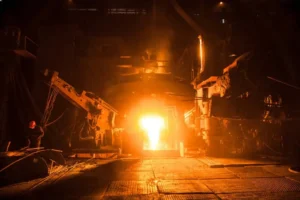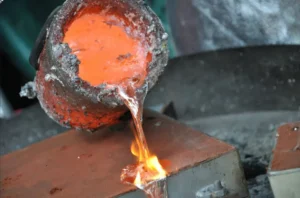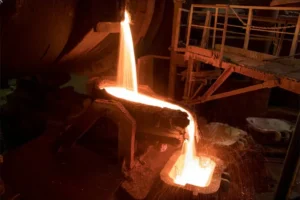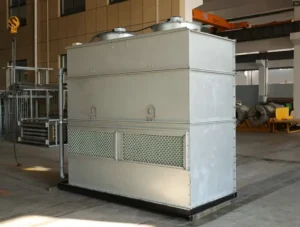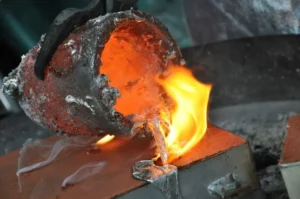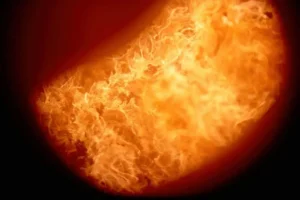Конструкция конструкции индукционной печи является ключом к ее производительности и безопасности. Разные типы печи, Выбор материала и применение рефрактерных материалов напрямую влияют на эффективность плавления, Срок службы и эксплуатационная безопасность индукционной печи.
1. Наклонная индукционная печь
Индукционная печь наклона является наиболее широко используемым типом печи в настоящее время. Его самая большая особенность заключается в том, что корпус печи можно наклонить, чтобы облегчить постукивание стальной воды или сброс шлака.
Структурные особенности
Каркас печи: Обычно строится со стальной конструкцией высокопрочной (такой как стальная секция, Стальная пластина сварка), с достаточной прочностью и жесткость. Обычно внутри рамы есть канал охлаждающей воды, чтобы охладить катушку и корпус печи.
Индукционная катушка: Это основной компонент индукционной печи, Обычно намотано медной трубкой с высокой конфиденциальностью (или квадратная медная трубка). Охлаждающая вода проходит через медную трубку, чтобы убрать тепло, генерируемое при подаче катушки. Внешний слой катушки обычно покрыт изоляционным материалом для предотвращения короткого замыкания и утечки.
Печь подкладка (рефрактерный материал): Это та часть, которая находится в прямом контакте с высокотемпературным расплавленным металлом, а также является частью печи, которая изнашивается самая быстрая. Материал подкладки выбирается в соответствии с типом металла плавки и емкостью печи. Подкладка обычно состоит из дна печи, стена печи и рта печи, и уплотнения или наливают на внутренней стороне индукционной катушки.
Чаевой механизм: В основном состоит из гидравлических цилиндров, Гидравлические станции и связанные с ними системы управления. Гидравлический цилиндр приводит к наклону корпуса печи вокруг оси для достижения разряда. Для безопасности, Обычно существует предел наклона и функции аварийной остановки.
Система охлаждения: Водяной охлаждение обычно используется для охлаждения индукционной катушки, оболочка печи (Некоторые типы печи) и другие детали, которые нужно охладить. Охлаждающая вода обычно смягчается и оборудована охлаждающей башней или чиллером для циркуляции.
Вести и водная голова: Компоненты, которые соединяют индукционную катушку с питания и охлаждающими водопроводами, должны обладать хорошей изоляцией и герметичными свойствами.
Выбор материала
Каркас печи: Простая углеродная сталь, Сплава Сталь, и т. д..
Индукционная катушка: высокая чистота медь (или квадратная медная трубка).
Печь подкладка (рефрактерный материал):
- Кистная подкладка: Основным компонентом является кварцевый песок (SiO2), который подходит для плавки чугуна и обычной углеродистой стали, и имеет низкую стоимость.
- Нейтральная подкладка: Основным компонентом является Corundum (Al2O3) или циркон (Zrsio4), который подходит для плавки из нержавеющей стали и сплавной стали, с хорошей кислотой и щелочной резистентностью и относительно долгим сроком службы.
- Щелочная подкладка: Основным компонентом является оксид магния (MgO) или магниевый алюминиевый шпинель, который подходит для плавки высокой марганцевой стали, Высокая сплавная сталь и другие металлы, которые очень коррозии для подкладки для печи. Он имеет наилучшую высокую температурную сопротивление и коррозионную сопротивление, Но стоимость высока.
Изолирующие материалы: Такие как асбест (Теперь в основном экологически чистые альтернативы), Алюминиевое силикатное волокно, и т. д., используются между индукционной катушкой и подкладкой для печи, чтобы сыграть роль в изоляции и буферизации.

2. Фиксированная индукционная печь
Корпус печи фиксированной индукционной печи не может быть перевернута. Обычно используется в некоторых случаях с большим объемом плавки и сифоном или нижним разрядом, или как переработанная печь или изоляционная печь.
Структурные особенности
Каркас печи: Похоже на тип наклона, Но так как нет необходимости наклоняться, его базовый дизайн может быть проще или непосредственно закреплена на земле.
Индукционная катушка: В основном то же самое, что и наклонная печь.
Печь подкладка: То же самое, что и наклонная печь, Но так как нет наклонного действия, Общие требования к стабильности подкладки печи могут быть выше.
Метод разрядки:
- Сифон разряжается: Через внешнюю давление или внутренний вакуум, Жидкий металл вытянут из рта печи или специального разряжающегося порта по принципу сифона.
- Дно разряжение: Есть разряжающий порт в нижней части корпуса печи, и разряжение контролируется стержней стойкой или механизмом скольжения. Этот метод чаще встречается при переработке печи и некоторых больших печи для плавиля.
Система охлаждения: То же самое, что и наклонная печь.
Выбор материала
Выбор материала в основном такой же, как и у печи наклона наклона, но в фиксированной печи с дном разряжается, Нижний рефрактерный материал и механизм разгрузки имеют более высокие требования к высокотемпературной сопротивлению и коррозионной сопротивлении.
3. Применение и выбор рефрактерных материалов
Рефрактерные материалы являются основными компонентами корпуса индукционной печи, которые напрямую влияют на срок службы печи и стоимость плавки.
Запчасти приложения
Дно печи: Нести сильное давление и высокую температуру расплавленного металла, и требуют достаточной прочности и сопротивления ползучести.
Стена печи: Прямо в контакте с расплавленным металлом, нести высокую температуру и эрозию расплавленного металла, и требует хорошего эрозионного сопротивления, Устойчивость к тепловым ударам и износ.
Печь рот: Нести высокую температуру и тепловой удар, а также износ во время кормления и разряда шлака, и требует хорошей износостойкости и сопротивления теплового шока.
Основание отбора
Крыли металлов:
- Чугун, обычный углеродистая сталь: Обычно используется подкладка с кислотной печью (Кварц песок), хорошая экономика.
- Нержавеющая сталь, Сплава Сталь: Обычно используемая подкладка для нейтральной печи (корунд, циркон), Хорошее эрозионное сопротивление.
- Высокая марганцевая сталь, Высокая сплава сталь: Обычно используемая подкладка щелочной печи (магнезия), Лучшая высокотемпературная устойчивость и эрозионная стойкость.
Температура плавления: Различные рефрактерные материалы имеют максимальную температуру использования, который должен быть выбран в соответствии с максимальной температурой металла плавки.
Емкость печи и рабочая система: Печи с большим количеством проступков и непрерывные рабочие печи имеют более высокие требования к рефрактерным материалам.
Расходы: Выберите экономические и применимые материалы на предпосылке соответствия требованиям к использованию.
Строительный процесс: Рефрактерные материалы в виде сухого растяжения, Касфлблбл, Сборные детали, и т. д., которые необходимо выбрать в соответствии с конструкцией печи и условиями строительства.
Строительство и обслуживание подкладки печи
Завязывание (проталкивание): Материалы сухого растяжения должны быть строго завязаны в соответствии с требованиями процесса, чтобы обеспечить плотность и однородность.
Спекание (печь для выпечки): Новая подкладка для печи должна подвергаться строгому процессу выпечки и спекания перед использованием, чтобы сформировать плотный спекающий слой для улучшения силы и срока службы обслуживания.
Ежедневное обслуживание: Регулярно проверяйте износ подкладки печи и отремонтируйте его вовремя, чтобы избежать “проникновение печи” несчастные случаи.
Суммируя, конструкция конструкции печи индукционная печь это сложный процесс, который требует всестороннего рассмотрения множества факторов, таких как требования к плавильному процессу, затраты на оборудование, эксплуатация и техническое обслуживание, и безопасность. Тип печи, Выбор материала и разумное применение рефрактерных материалов являются ключом для обеспечения эффективной и безопасной работы индукционной печи.


